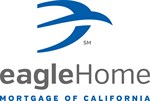HUD offers a model form for this disclosure on its website, but use of the model form is not mandatory. The Informed Consumer Choice Disclosure is due three business days after a lender receives an application from a consumer for an FHA loan. This disclosure is not required when a loan applicant is not eligible for a conventional mortgage. Providing the disclosure is required when a lender determines that a loan applicant may be eligible for a conventional loan or when a lender is not certain that a loan applicant’s options are limited to FHA loan products.
Important Notice to Homebuyers, which is a two-page disclosure that provides loan applicants with:
- A reminder that HUD does not regulate interest rates for FHA loans and that rates and other loan terms are negotiated between the lender and the loan applicant
- Warnings about participating in loan fraud
- A statement of the importance of reporting loan fraud
- The number to use to contact HUD if the loan applicant believes that he/she has been subject to discrimination
- A notice that the loan may be prepaid at any time without incurring a prepayment penalty
- An explanation of the circumstances (such as refinances) in which a borrower may be entitled to a refund of a portion of an upfront mortgage insurance premium
- An explanation of the length of time that monthly mortgage insurance premiums are due
- a Lead Disclosure in transactions involving homes built prior to 1978
For Your Protection: Get a Home Inspection
Loan Estimate
TILA Disclosures
Closing Disclosure

Underwriting for an FHA loan usually begins with the use of an automated
underwriting system (AUS), known as Technology Open to Approved Lenders
(TOTAL). Lenders submit data to TOTAL, which produces a
Mortgage Scorecard that evaluates the overall credit risk posed
by the borrower
A downgrade to manual underwriting automatically occurs when the following and other conditions exist:
 Documentation for a gift is essential, and it must include:
Documentation for a gift is essential, and it must include:
- Within the past 12 months, had:
- Three or more mortgage payments that were 30 or more days late
- One or more mortgage payments that were 60 or more days late, or
- One mortgage payment that was more than 90 days late
- $1,000 or more in disputed derogatory credit accounts
- Received a bankruptcy discharge within two years of the assignment of an FHA case number
- Transferred title to his/her property though a foreclosure sale, short sale, or the exchange of a deed-in-lieu of foreclosure within three years of the assignment of an FHA case number, or
- Undisclosed mortgage debt
- Non traditional credit ( has 3 other written references 12 months)
- FHA underwriting may exceed 31/ 43 and go as high as 36/50 if there are compensation factors
- Obtain funds required to make a down payment
- Obtain funds for closing costs
- Lower the DTI ratio by paying off existing debts with a loan
- Down payment funds may also come from a gift that is fully documented. Acceptable gift funds are those that come from family members, a close friend who has a clearly defined and documented interest in the borrower, a charitable organization, or a government agency that promotes home ownership for first-time home buyers or low- to moderate-income families.
 Documentation for a gift is essential, and it must include:
Documentation for a gift is essential, and it must include:
The donor’s name and contact information
The donor’s relationship to the borrower
The amount of the gift
A statement that repayment is not expected, and
A copy of the donor’s bank statement, showing withdrawal of the funds and a statement showing the deposit of them into the borrower’s account
The donor’s relationship to the borrower
The amount of the gift
A statement that repayment is not expected, and
A copy of the donor’s bank statement, showing withdrawal of the funds and a statement showing the deposit of them into the borrower’s account
The ability to show the transfer of funds from the gift donor to the
recipient is essential because the HUD Handbook states that “Cash on Hand is
not an acceptable source of donor gift funds
role of the FHA to endorse them. Direct endorsement programs
allow approved lenders to underwrite and close loans without prior approval from
the FHA. Within 60 days after the closing of a loan under a direct endorsement
program, the lender must submit the closing package to HUD, where the agency
will either endorse the case and issue a Mortgage Insurance Certificate
(MIC) or issue a Notice of Return (NOR). Lenders may attempt to
resolve a Notice of Return by submitting additional information and requesting
reconsideration for endorsement








